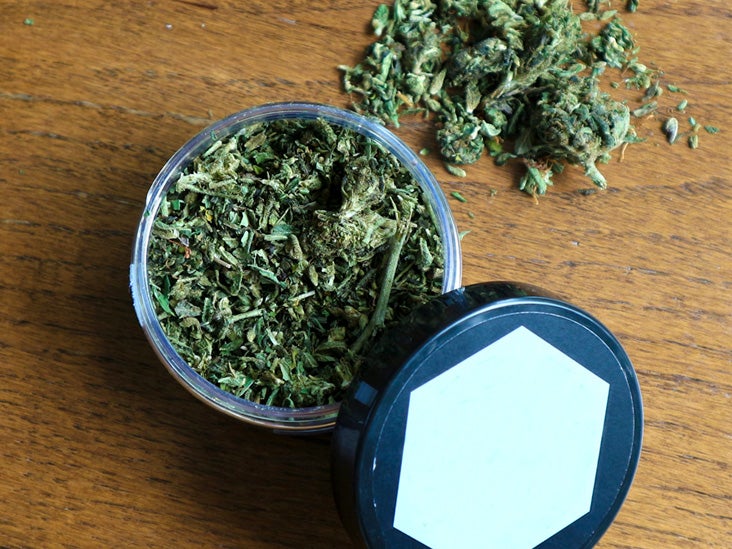By Corey Whelan
November 2, 2018
The first study
In 1971, a study looked at marijuana’s effects on eye pressure, which is a symptom of glaucoma. Youthful subjects were given eye examinations right before and one hour after smoking a marijuana cigarette.
The study, published in the Journal of the American Medical Association, found a 30 percent decrease in eye pressure among a large number of study participants after smoking marijuana. As encouraging as that may sound, the study didn’t address all aspects of this potential treatment.
Since then, it’s become common knowledge that marijuana has an effect on glaucoma. But is this really true?
In this article, we’ll weigh the potential benefits and risks of using marijuana and marijuana-based products as treatments for glaucoma.
Eye pressure and glaucoma
Glaucoma is an eye disease that can damage the optic nerve, causing vision loss over time.
Each eye has one optic nerve. The job of the optic nerves is to carry information from the eyes to the brain.
In people with glaucoma, these nerves can become damaged by fluid buildup within the eye. Because it can’t drain out, the excess fluid increases eye pressure. When left untreated, blindness may result.
Potential benefits
Decreased eye pressure
Glaucoma is controlled by reducing eye pressure, also called intraocular pressure.
Research funded by the National Eye Institute, a division of the National Institutes of Health, found that smoking marijuana does temporarily reduce eye pressure. It also found that intraocular pressure could be lowered by taking tetrahydrocannabinol (THC), an active ingredient in marijuana, by injection or pill.
The research also showed that this benefit is temporary at best and may cause low blood pressure. As well, doses are harder to manage compared to standard treatments.
Possible alternative to traditional treatments
Optic nerve damage is permanent. For that reason, keeping eye pressure consistently low is important.
Marijuana use doesn’t maintain consistent eye pressure. But many traditional treatments for glaucoma do maintain eye pressure effectively. These include eye drops, laser surgery, and other surgeries. People who carefully manage their glaucoma maintain their eyesight.
However, glaucoma can sometimes be tricky to treat. Some have a difficult time finding medication to reduce eye pressure significantly. Others have side effects or allergic reactions to the medications they are prescribed. There may be a lot of trial and error required before an effective treatment is found. It’s best to follow your eye doctor’s recommendations.
Some people with end-stage glaucoma may find that marijuana reduces their anxiety or depression. Marijuana may be a preferred alternative to taking prescription anxiety medications.
Lower cost
In states where marijuana is legal, the cost of marijuana varies and depends on several factors. Synthetic medical marijuana pills, such as Marinol, aren’t FDA-approved for the treatment of glaucoma. Talk to your doctor about using this drug before you start taking it as it may interfere with medications.
Marinol won’t be covered by your health insurance plan for glaucoma. The price and quality of marijuana available to purchase will also vary widely. Where you live, the laws governing the sale of marijuana there, and who you purchase it from can all be factors.
Drawbacks
Not approved and not legal in many states
Marijuana isn’t approved by the Food and Drug Administration (FDA) for the use of glaucoma.
As well, marijuana use is still illegal in most states and at a federal level. In states where marijuana isn’t legal, using marijuana for glaucoma or any other condition can’t be recommended.
Short-acting
Eye pressure must be controlled continuously for 24 hours each day. Marijuana reduces eye pressure for only three to four hours at a time. This means you would need to smoke marijuana or take THC pills six to eight times a day to maintain a healthy eye pressure.
Decreased blood flow
Marijuana decreases blood pressure throughout the body. This could result in a reduced supply of blood to the optic nerves, which can cause more damage.
Decreased muscle coordination
People over 60 are a high-risk group for glaucoma. The mood-altering state associated with marijuana might put people in this age group at an increased risk of falls and other accidents.
Toxin exposure
Like cigarettes, marijuana contains many harmful chemicals and irritants, which can damage the lungs and bronchial tubes. These include tar and carbon monoxide.
Other side effects
Other potential side effects include:
- problems with short-term memory
- impaired thinking and inability to concentrate
- nervousness, excitability, or paranoia
- decreased reaction time
- inability to interact normally with others
- increased appetite
- increased heart rate
- inability to drive or operate machinery safely
- lung damage
- coughing and wheezing
Potential substance abuse
Constant use of marijuana could lead to marijuana use disorder and addiction. You may experience feelings of irritability, difficulty sleeping, restlessness, and other side effects during and after withdrawal.











